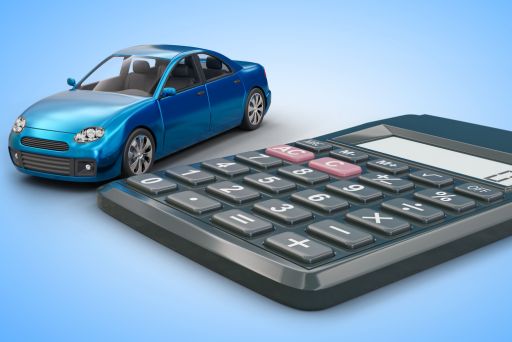Writing off a vehicle on taxes can significantly benefit business owners and self-employed individuals. Understanding the intricacies of tax deductions related to business vehicle use can lead to substantial savings. This article will explore the different methods to deduct car expenses, the requirements to qualify for these deductions, and the detailed steps to ensure compliance with the Internal Revenue Service (IRS) regulations.

Who Can Deduct Car Expenses?
For tax years 2018-2025, only those who are self-employed, such as contractors (freelancers or gig workers), or business owners can deduct car expenses. The IRS frequently updates federal tax laws, so it’s wise to review them annually.
If you use your vehicle for both business and personal purposes, you must track your car expenses and only deduct the portion related to business use. In this scenario, your deduction is based on the percentage of mileage attributed to self-employment.
Employees who receive a W-2 typically do not qualify for vehicle expense deductions until after 2025.
Understanding Car Expenses for Business Use
Business Vehicle Use
When using a car for business, you can deduct car expenses associated with its operation. It’s essential to differentiate between business use and personal use. Only the portion of the vehicle’s use dedicated to business reasons is eligible for tax deductions. The IRS provides two primary methods for writing off car expenses: the actual expense method and the standard mileage rate method.
Actual Expense Method
The actual expense method allows you to deduct the actual expenses incurred in the operation of the vehicle for business purposes. These expenses include fuel, oil, repairs, lease payments, registration fees, insurance, and depreciation. To utilize this method, maintaining meticulous records of all car-related expenses is crucial.
Standard Mileage Rate Method
The standard mileage rate method is a simplified way to calculate your business car deduction. The IRS sets a standard rate per mile driven for business purposes. For example, in 2024, the rate is 67 cents per mile. This method requires tracking the total miles driven for business purposes but is less burdensome in terms of record-keeping compared to the actual expense method.
How Do I Deduct Car Expenses?
The method for deducting car expenses varies based on your employment status. Business owners or those self-employed can use Schedule C (Form 1040) Profit or Loss from Business to claim business-related car expenses. Farmers can use Schedule F (Form 1040) Profit or Loss from Farming to deduct vehicle expenses related to their farming operations.
How Do I Calculate the Business Percentage of a Car?
If you’re self-employed and use your car for work, calculate the business percentage of your car expenses by totaling all your car-related costs and multiplying by the percentage of total miles driven for business purposes.
Qualifying Car Expense Deductions
- Gas
- Repairs, including new tires
- Car insurance
- Limited depreciation or leasing fees
- Section 179 deduction
- Tolls
- Parking
- Maintenance fees
- Registration fees
- Garage fees
- Interest portion of car payments
- Lease payments

Steps to Write Off a Vehicle on Taxes
1. Determine Business Use Percentage
To accurately deduct business vehicle expenses, determine the business use percentage of the vehicle. This percentage is calculated by dividing the business miles driven by the total mileage for the year. Only the portion of expenses proportional to the business use percentage can be deducted.
2. Choose Between Actual Expense Method and Standard Mileage Rate Method
Evaluate both methods to decide which offers a larger deduction:
- Actual Expense Method: Total all actual expenses related to the vehicle’s operation and apply the business use percentage.
- Standard Mileage Rate Method: Multiply the business miles by the IRS’s standard mileage rate.
3. Maintain Detailed Records
For either method, keep detailed records of business miles driven, including the date, purpose, and distance of each trip. Use a mileage log or app to track odometer readings accurately. Additionally, retain receipts and documentation for all actual expenses if opting for the actual expense method.
4. File the Appropriate Tax Forms
Depending on your business structure, you’ll need to file different tax forms:
- Self-employed individuals: Use Schedule C (Form 1040) to report business expenses.
- Small businesses: Depending on the entity type, use the relevant business tax forms.
5. Consult a Tax Professional
Navigating tax deductions can be complex. It’s advisable to consult a tax professional such as Vyde to ensure you’re maximizing your deductions while remaining compliant with IRS regulations.

Conclusion
Writing off a vehicle on taxes involves understanding the rules and requirements set by the IRS for business use. Whether you choose the actual expense method or the standard mileage rate method, maintaining accurate records and understanding the eligible car-related expenses are crucial. By following these guidelines and consulting with a tax professional, business owners and self-employed individuals can maximize their tax deductions and reduce their taxable income effectively.
For more detailed information and personalized advice, consider reviewing the resources provided by tax preparation services such as Vyde .
FAQs for “How to Write Off a Vehicle on Taxes”
1. Who is eligible to deduct car expenses on their taxes? Business owners and self-employed individuals, such as contractors and freelancers, can deduct car expenses on their taxes. Employees who receive a W-2 typically do not qualify for these deductions for tax years 2018-2025. It’s important to review IRS updates annually, as tax laws can change.
2. What is the difference between the actual expense method and the standard mileage rate method? The actual expense method allows you to deduct actual costs incurred for business use of your vehicle, such as fuel, repairs, insurance, and depreciation. This requires detailed record-keeping. The standard mileage rate method involves multiplying the business miles driven by the IRS’s set rate per mile (e.g., 67 cents per mile in 2024). This method simplifies record-keeping but may result in a smaller deduction.
3. How do I calculate the business use percentage of my vehicle? To calculate the business use percentage, divide the total business miles driven by the total miles driven for the year. This percentage is then applied to your total car expenses to determine the deductible amount. Accurate mileage logs or tracking apps can help ensure precision.
4. What expenses can be deducted using the actual expense method? The actual expense method allows deductions for various car-related expenses, including fuel, oil, repairs, insurance, depreciation, lease payments, registration fees, tolls, parking, maintenance fees, garage fees, and the interest portion of car payments. Detailed records of these expenses must be maintained.
5. What forms do I need to file to deduct car expenses? For self-employed individuals, car expenses are reported on Schedule C (Form 1040), Profit or Loss from Business. Farmers can use Schedule F (Form 1040), Profit or Loss from Farming. Depending on the business structure, other relevant tax forms may be required. Consulting with a tax professional can help ensure accurate filing.


